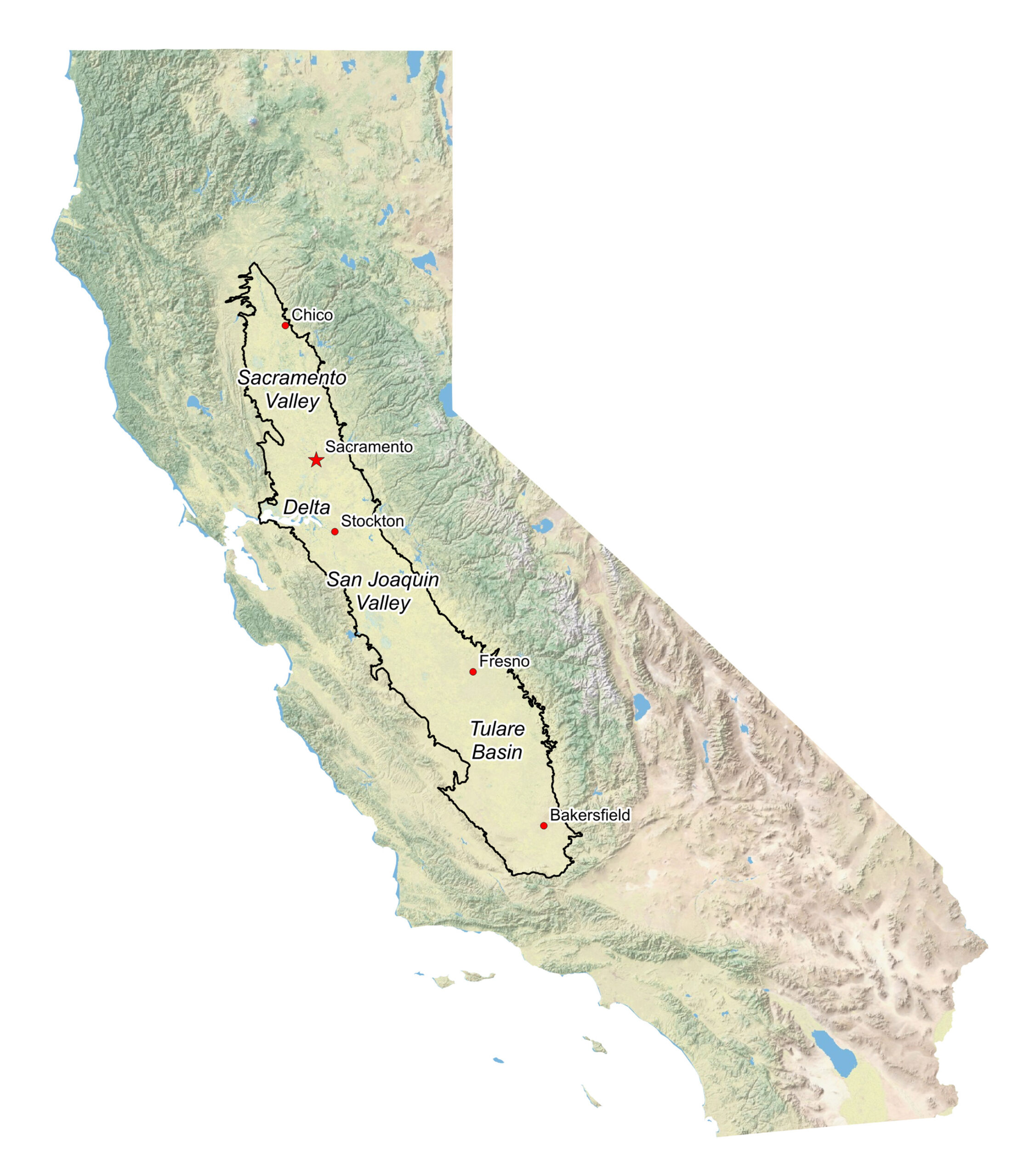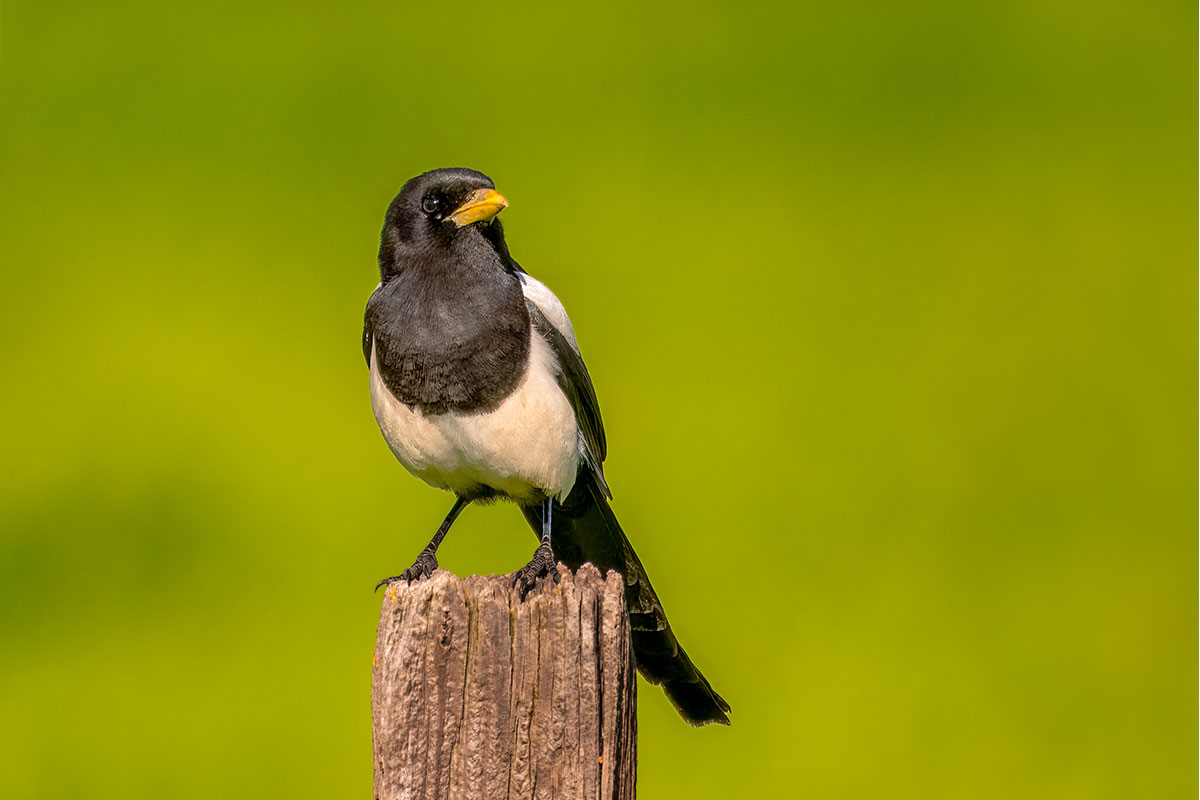
The Central Valley
Bounded by the Coast Ranges to the west and the Sierra Nevada to the east, the Central Valley covers 11% of California’s land area. From Redding to south of Bakersfield, the valley includes all or parts of 18 counties: Butte, Colusa, Glenn, Fresno, Kern, Kings, Madera, Merced, Placer, San Joaquin, Sacramento, Shasta, Stanislaus, Sutter, Tehama, Tulare, Yolo, and Yuba. Historically covered in wetlands, riparian (riverside) woodlands, and grasslands, it is now dominated by agriculture and urban development.
Situated on the Pacific Flyway, the Central Valley is one of the most important wintering waterfowl regions in the world. Despite the loss of 90% of its wetlands, ducks, geese, and swans pour into the valley’s remaining wetlands, refuges, and flooded rice fields each winter. The valley is also important to wintering Greater and Lesser Sandhill Cranes that can be found in wetlands and resting agricultural fields. Migratory raptor species visit the grasslands of the Central Valley and surrounding foothills, including Ferruginous Hawk, Rough-legged Hawk, and Prairie Falcon.
Spring brings migration, and as the wintering species depart, 65 million landbirds funnel through the Central Valley on their journey north, including significant numbers of Lawrence’s Goldfinch, Tree Swallow, and Anna’s Hummingbird. Spring also brings a push of shorebird species on their way to breeding grounds in the far north.
As spring transitions to summer, temperatures warm, and both resident and migratory species settle in for breeding. The Central Valley hosts the largest remaining breeding colonies of the threatened Tricolored Blackbird. Over 95% of riparian woodlands have been lost, but the remainder supports breeding species such as Black-headed Grosbeak, Ash-throated Flycatcher, and lingering numbers of the threatened Yellow-billed Cuckoo. Fall migration brings another chance to catch migrant songbirds and shorebirds moving through or settling in the valley.
Resident species that can be found year-round include the California-endemic Yellow-billed Magpie, Oak Titmouse, and Nuttall’s Woodpecker. There are birds to be found in the Central Valley at any time of year!

Keep close to Nature’s heart… and break clear away, once in a while, and climb a mountain or spend a week in the woods. Wash your spirit clean.
– John Muir
Sacramento Valley
Shaped by the Sacramento River, the Sacramento Valley covers the northern portion of the Central Valley. A reasonable amount of wetland and riparian woodland restoration has occurred in this area in recent decades. Protected areas that have been established in the Sacramento Valley include the Sacramento National Wildlife Refuge Complex, Gray Lodge Wildlife Area, and the Bobelaine Audubon Sanctuary. This area also includes the majority of ricelands in California.
Birds of note: wintering ducks, geese, and swans, Yellow-billed Cuckoo, Bank Swallow, Yellow-billed Magpie, Purple Martin
Sacramento-San Joaquin Delta
The Sacramento and San Joaquin rivers come together to form the Delta as their waters flow into the San Francisco Bay. A matrix of wetlands and islands, much of the area is inaccessible to the public. Accessible protected areas include the Yolo Bypass Wildlife Area, Cosumnes River Preserve, and Staten Island.
Birds of note: wintering ducks and geese, Sandhill Cranes, migrating shorebirds
San Joaquin Valley
Much drier than the Sacramento Valley, the San Joaquin Valley is dominated by agriculture, including grapes, orchards, and dairies. Areas of wetlands remain, and a significant amount of riparian woodland restoration has occurred over the past decade. Important protected areas include the San Luis and San Joaquin River National Wildlife Refuge complexes and Dos Rios State Park. The grasslands along the eastern side of the valley are excellent for wintering raptors. Large colonies of Tricolored Blackbirds can be found in the San Joaquin Valley, often associated with dairies.
Birds of note: wintering ducks and geese, including Aleutian Cackling Goose, wintering raptors, Tricolored Blackbird, migrating shorebirds
Tulare Basin
The terminus of the Kern, Kings, Tule, and other rivers, the Tulare Basin was historically covered by several large lakes, including Tulare Lake, the largest freshwater lake west of the Mississippi River. Now that the rivers have been dammed, leveed, and diverted, the basin is primarily composed of agriculture with remnant areas of wetlands and alkali sink. Protected areas include the Kern National Wildlife Refuge complex and Mendota Wildlife Area. In particularly wet years, Tulare Lake reforms as a ghost of its former self, reminding us of what has been lost.
Birds of note: wintering ducks, migrating shorebirds
